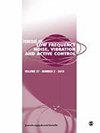Comments to: Infrasounds in Residential Area – Case Study1
IF 2.4
4区 工程技术
Q1 Earth and Planetary Sciences
Journal of Low Frequency Noise Vibration and Active Control
Pub Date : 1995-06-01
DOI:10.1177/026309239501400205
引用次数: 4
Abstract
The article, published in the most recent issue of the Journal, presents measurements of low and infrasonic noise emitted from an industrial zone and transmitted into a residential area. The measurements seem to have been carried out with relevant equipment and care, and the results are very much in line with, what I believe can be found in many residential areas lying close to industrial zones. However, the authors have used G-weighted levels for evaluation of noise with significant energy in the range about 20 Hz, despite the fact that the Gcurve has a low frequency cut-off at 20 Hz. This misunderstanding leads to peculiar conclusions, and it calls for comments. The article may leave the reader with the impression that infrasound having G-weighted levels as low as 62-70 dB can be perceived by humans and give rise to complaints. This indication is far from the presently accepted threshold of perception of 90-100 dB(G), and it certainly cannot be concluded on basis of the observations reported. The authors also use unweighted levels, but filtered with a low pass filter at 20 Hz, and obviously this does not change the problem. The introduction of the article reports on "reasons for complaints ... of acoustical origin", and on problems relating to infrasound as being "of increasing importance". Measurements within the residential area show Gweighted levels of 62-70 dB, and levels of 57-66 dB, when measured linearly up to 20 Hz (lower limit not reported). The authors do not mention audibility explicitly, but state that these levels are "harmless to the human hearing organs". Taken the introduction into account, the reader may understand that the measured levels can be perceived by humans, but they do not damage the ear. The authors continue by claiming that the "... possibility of non-auditory effects of infrasound on the housing estate inhabitants cannot be definitely precluded ...". Well it cannot be precluded, but on the other hand, nothing in the study has suggested that infrasound should be the cause of the effects, and the statement would have been equally true, had the G-weighted levels been even lower. No effort was done to report more precisely on the non-auditory effects and to discuss their existence, nature and origin. Nevertheless, the connection to infrasound is suggested to the reader without the slightest foundation in the study. The authors seem unnecessarily concentrated on the infrasonic region. Their评论:住宅区内的次声-个案研究1
这篇文章发表在最新一期的《华尔街日报》上,介绍了从工业区发出并传播到居民区的低声和次声噪音的测量结果。这些测量似乎是在相关设备和谨慎的情况下进行的,我认为,其结果与许多靠近工业区的居民区的情况非常吻合。然而,作者使用g加权水平来评估20 Hz范围内具有显著能量的噪声,尽管g曲线在20 Hz处具有低频截止。这种误解导致了奇怪的结论,需要加以评论。这篇文章可能会给读者留下这样的印象:g级低至62-70分贝的次声可以被人类感知,并引起投诉。这一指标与目前公认的90-100 dB(G)的感知阈值相去甚远,当然也不能根据所报道的观察结果得出结论。作者还使用了未加权的电平,但使用了20 Hz的低通滤波器进行滤波,显然这并不能改变问题。文章的引言报告了“投诉的原因……”“声学起源”,以及与次声有关的问题“日益重要”。在住宅区内的测量显示,当线性测量到20 Hz时,g加权水平为62-70 dB,水平为57-66 dB(下限未报告)。作者没有明确提到可听性,但声明这些水平“对人类听觉器官无害”。考虑到引言,读者可能会理解,测量的水平可以被人类感知,但它们不会损害耳朵。作者继续声称“……不能绝对排除次声对住宅区居民产生非听觉影响的可能性……”这是不能排除的,但另一方面,研究中没有任何证据表明次声是造成这种影响的原因,如果g加权水平更低,这个结论也是同样正确的。对于非听觉效应,没有更精确的报道,也没有讨论它们的存在、性质和起源。然而,在没有丝毫研究基础的情况下,向读者提出了与次声的联系。作者似乎不必要地集中在次声波区域。他们的
本文章由计算机程序翻译,如有差异,请以英文原文为准。
求助全文
约1分钟内获得全文
求助全文
来源期刊
CiteScore
5.40
自引率
4.30%
发文量
0
审稿时长
4.2 months
期刊介绍:
Journal of Low Frequency Noise, Vibration & Active Control is a peer-reviewed, open access journal, bringing together material which otherwise would be scattered. The journal is the cornerstone of the creation of a unified corpus of knowledge on the subject.

 求助内容:
求助内容: 应助结果提醒方式:
应助结果提醒方式:


